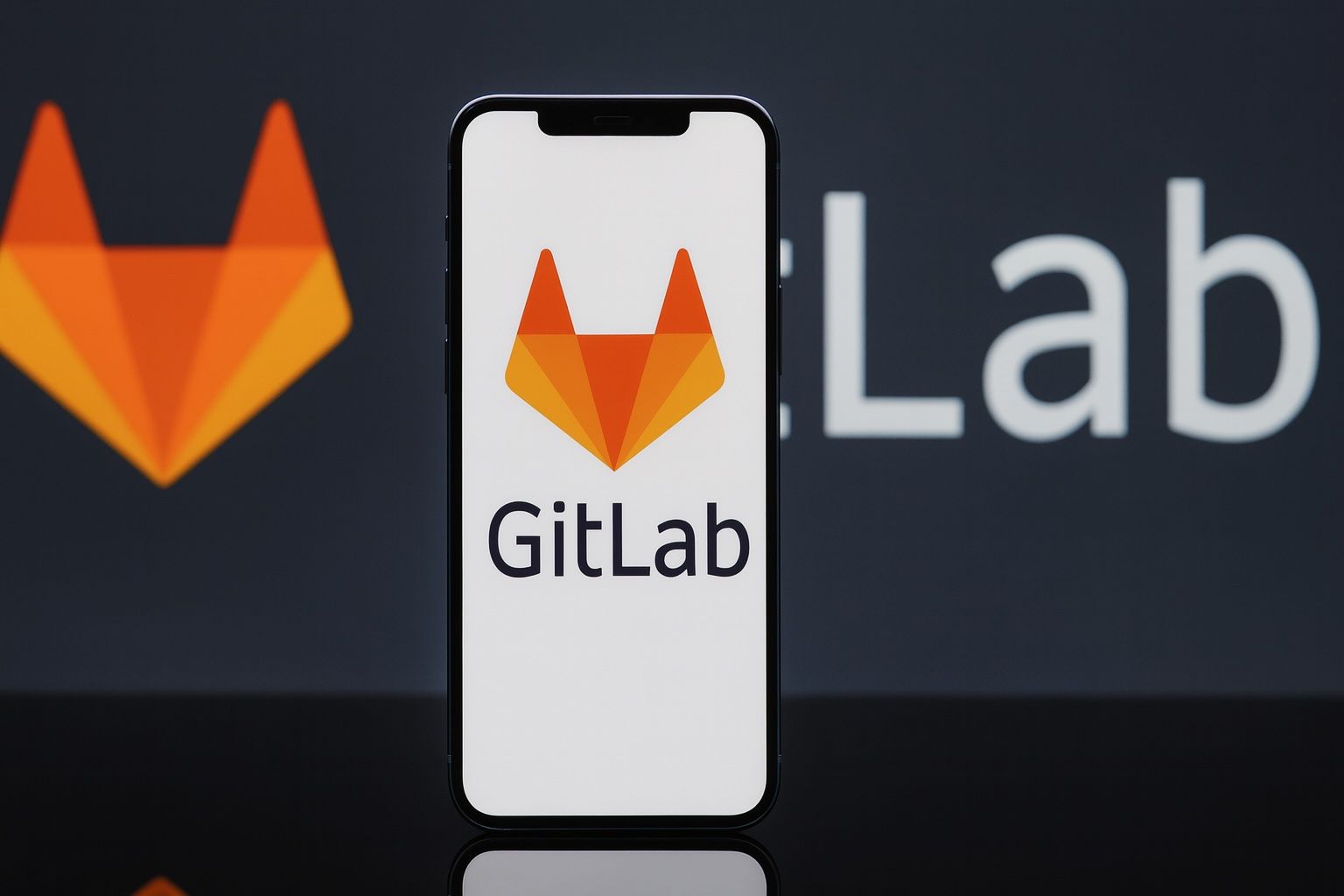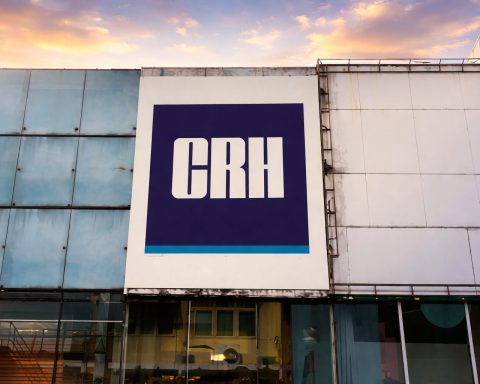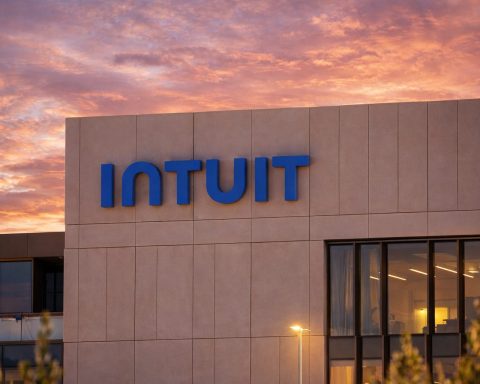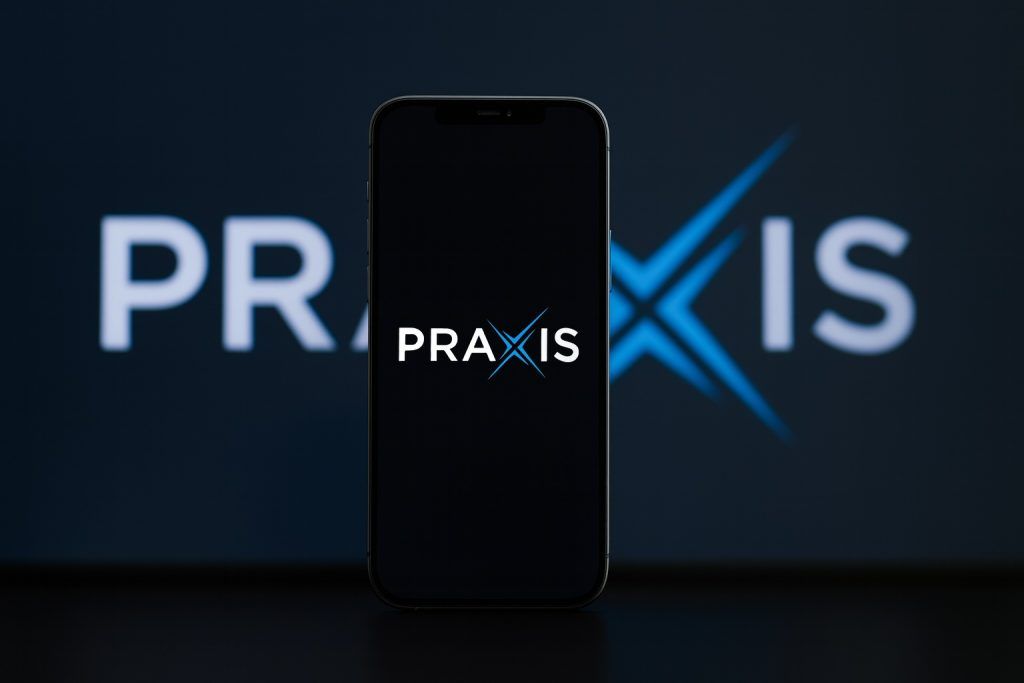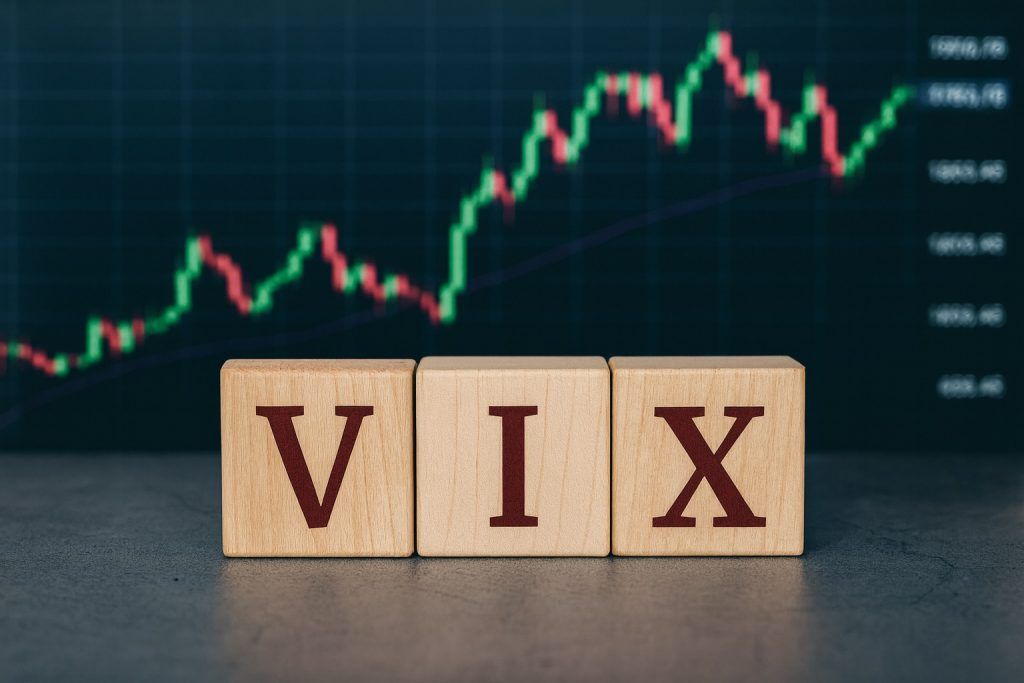- GTLB leaps on buyout buzz: GitLab’s share price jumped ~11% on October 16, closing at $48.27 after reports that cloud-monitoring firm Datadog is exploring a potential $60+ per share acquisition of the DevOps platform [1]. Nearly 19 million shares traded – about 7× the typical volume – as investors piled in on the takeover rumor [2] [3].
- Rebound from recent slide: The rally snapped a two-week downturn. GitLab stock had sunk to $43.65 by Oct. 15 [4] amid broader tech volatility and jitters from last month’s earnings, where a CFO departure and conservative guidance sparked concern [5] [6].
- Strong earnings, cautious outlook: In September, GitLab reported Q2 FY2026 revenue of $236M (+29% YoY), with EPS $0.24 beating estimates [7] [8]. It raised full-year profit guidance but held FY26 sales forecasts flat around ~$937M [9]. Combined with news that CFO Brian Robins will leave for Snowflake [10], the cautious stance triggered an ~7% stock drop on Sept. 4 [11].
- Analysts divided but upbeat:Bank of America reaffirmed a Buy rating (PT $72), calling GitLab’s post-earnings pullback a buying opportunity [12]. Overall, Wall Street has a Moderate Buy consensus with an average $60–61 price target (~30% upside) [13]. However, Wells Fargo initiated coverage at Neutral ($50 PT) amid “uncertainty” around GitLab’s go-to-market transition and pricing pressures [14], reflecting some caution.
- AI arms race in DevOps:Atlassian, a key rival, saw its stock surge ~8% earlier this week after strong results and a “game-changing” Jira AI integration [15] [16]. Microsoft’s GitHub (not publicly traded) also aggressively invests in AI (e.g. Copilot). This underscores how AI-driven DevSecOps is the new battleground – GitLab is viewed as an “AI play” in software development, which has heightened investor interest in its growth (and takeover appeal) [17].
- New products & partnerships: GitLab is doubling down on AI features and cloud deals. It recently launched an AI assistant “Duo” and an advanced SAST code scanner to help developers find and fix vulnerabilities faster [18]. The company also inked a three-year AWS partnership to expand its single-tenant Dedicated cloud offering for regulated industries [19]. These moves aim to keep GitLab’s DevOps platform competitive as enterprises seek more automation and security integration.
GitLab Shares Surge on Takeover Speculation
GitLab Inc. (NASDAQ: GTLB) rocketed higher on Thursday amid renewed buyout speculation. The stock surged 10.6% intraday – rising from the mid-$40s to close at $48.27 – after a report that cloud-monitoring firm Datadog (DDOG) may be preparing a takeover bid [20]. The rumored offer price, over $60 per share, represents a substantial premium. Traders responded enthusiastically to the prospect: GitLab’s nearly 11% one-day jump far outpaced the broader market, and trading volume exploded to ~19 million shares, about seven times its recent daily average [21] [22].
The Datadog-GitLab chatter first surfaced via a StreetInsider report and quickly spread across trading floors. Datadog, a $30+ billion cloud software player, is said to be exploring a deal “for more than $60 a share,” according to Seeking Alpha coverage [23]. Notably, Datadog’s own stock fell ~5% on the news as its investors grappled with the potential cost, while GitLab’s stock spiked 11% in minutes. The rumor suggests Datadog sees strategic value in GitLab’s all-in-one DevSecOps platform – possibly to combine cloud monitoring with software development tools. Neither company has commented on the speculation, and no agreement is certain at this stage.
This isn’t the first time GitLab has been in M&A headlines. In July 2024, Reuters reported that GitLab was exploring a sale after attracting interest from multiple tech firms (with Datadog already named as a suitor) [24] [25]. That news sent GitLab shares up ~11% before talks went quiet. Industry analysts have long viewed GitLab as an attractive target in the DevOps space. “GitLab has long been seen as a likely acquisition candidate,” Needham’s Mike Cikos observed during last year’s rumor cycle, noting that many expected a buyer like AWS or Google Cloud, though a tie-up with Datadog “could make strategic sense” as well [26]. The revived chatter in 2025 suggests consolidation pressures remain strong in the software development tools market, especially as companies seek to expand their AI-driven DevOps capabilities.
From Sell-Off to Spike: Recent Stock Performance
GitLab’s share price from late August through mid-October 2025. An early-September plunge followed earnings (and a CFO exit), and an October spike occurred on Datadog buyout rumors.
GitLab’s stunning rise on Oct. 16 comes on the heels of a volatile month for the stock. Just a day earlier, GTLB had closed at $43.65 (Oct. 15) amid a multi-week slump [27]. In late September, shares were trading above $50, but drifted lower into the mid-$40s as investors digested mixed signals from the company and a choppy broader market. The Nasdaq had been hitting record highs in early October, only to plunge ~3.6% on Oct. 10 during a global tech sell-off [28] [29]. GitLab was caught in that downdraft – falling nearly 5% on Oct. 10 [30] – and struggled to regain momentum until the takeover rumor rejuvenated the bulls.
Several company-specific events also weighed on GitLab’s stock before the rumor. Notably, GitLab’s earnings report in early September initially sent the shares sharply lower. On September 4, the stock tumbled over 7% in one day [31] after management delivered mixed news (strong quarterly results tempered by cautious forward guidance and a surprise C-suite change). Trading volume spiked above 16 million shares on that earnings reaction – a sign that both disappointed investors and opportunistic buyers were active [32] [33]. From that post-earnings low around $43, GitLab did rebound into the high-$40s over mid-September, but it remained volatile. By the start of this week, the stock was back under pressure – closing at $44.19 on Oct. 13 and $43.65 on Oct. 15 [34] – before Thursday’s M&A-fueled relief rally erased those losses.
Investor sentiment seems to have flipped overnight with the Datadog news. Where recent weeks saw mounting concern (e.g. rising volume on down days, and technical “sell” signals in mid-October trading [35]), the takeover rumor suddenly sparked fear of missing out. Market observers noted that GitLab’s short interest had been relatively low and options activity bullish (GTLB’s put/call ratio was around 0.29 ahead of the news – indicating a strongly bullish options skew) [36]. This suggests many traders were positioned for upside or at least not betting against the company. The rumor catalyzed a rush of buying, forcing even some skeptics to cover positions. By the close on Oct. 16, GitLab’s stock had not only recovered its early-month losses but was one of the market’s top gainers on the day.
Earnings Recap: Growth Surges, But Guidance Static
Stepping back, GitLab’s fundamentals have been a mixed bag of high growth and cautious outlook – a combination that contributed to its recent stock swings. In its Q2 FY2026 report (for the quarter ended July 31, 2025), GitLab delivered robust results. Revenue jumped 29% year-over-year to $236.0 million, beating the company’s own guidance (~$226–227M) and accelerating slightly from the prior quarter [37] [38]. The top-line beat was accompanied by improving profitability: GitLab earned $0.24 in adjusted EPS, a 60% jump from $0.15 a year ago, and well above Wall Street’s ~$0.16 consensus [39] [40]. Non-GAAP operating margin hit 17%, up from 10% a year prior, as the company inched closer to break-even on a GAAP basis. Free cash flow also turned positive ($46.5M, vs. $10.8M a year ago) – a milestone for the company [41].
Key customer metrics underscored the demand for GitLab’s DevSecOps platform. The number of large clients (>$100K in annual recurring revenue) rose to 1,344, up 25% year-on-year [42]. GitLab’s dollar-based net retention held at a healthy 121%, meaning existing customers on average expanded their spend. Remaining performance obligations (backlog) jumped 32% to about $988M [43], reflecting strong forward bookings. In short, the business is growing rapidly – bolstered by digital transformation trends and GitLab’s push into enterprise accounts.
Despite these strengths, management struck a conservative tone that surprised some analysts. For the upcoming Q3, GitLab guided revenue to $238–239M, slightly below consensus estimates (~$241M) [44]. More notably, the company reiterated its full-year revenue forecast of $936–942M (≈26% YoY growth) instead of raising it [45], even though Q2 beat expectations. Executives explained that while demand is solid, they prefer to “remain prudent” given macro uncertainties and ongoing go-to-market changes. This cautious stance – essentially not upping the sales outlook after a big quarter – gave some investors pause [46]. It raised the question of whether GitLab is simply sandbagging guidance (as Bank of America’s analysts suspect) [47], or if there are subtle signs of softening demand into year-end.
Compounding those concerns was an unexpected management change: GitLab announced that CFO Brian Robins will step down to take the CFO post at Snowflake (effective Sept. 19) [48]. The company named a finance VP as interim CFO and emphasized that the transition would be orderly. However, the market typically dislikes C-suite uncertainty – and in this case, Robins had helped steer GitLab through its IPO and rapid growth phase. The departure news, alongside the conservative guidance, spooked investors. GitLab’s stock plunged about 8% in pre-market trading after earnings [49], and closed down ~7.3% on Sept. 4 [50] despite the quarterly beat. This reaction wiped out roughly $600 million in market value overnight.
GitLab’s CEO Sid Sijbrandij sought to reassure stakeholders on the earnings call, stressing that demand remains strong – particularly for the premium Ultimate tier of GitLab’s platform – and that the leadership team (including a new interim CFO) is focused on execution. He also disclosed plans to undergo treatment for a recurrent cancer diagnosis (osteosarcoma) for the second time, while affirming he would continue his CEO duties during recovery. This personal news did not appear to significantly affect the stock, but it added to the overall information mix investors were digesting.
In the weeks following earnings, GitLab’s stock gradually clawed back some losses, suggesting that initial fears might have been overdone. Indeed, several analysts doubled down on bullish calls after the dip. For example, BofA Securities reiterated its Buy rating and $72 price target, arguing that GitLab’s long-term trajectory remains intact and that management likely erred on the side of caution with guidance [51] [52]. The Bank of America team noted GitLab’s subscription revenue growth actually accelerated to ~30% YoY in Q2 (from ~28% in Q1), a sign of robust demand, and said the post-earnings selloff created an “attractive buying opportunity” for a quality DevOps franchise [53].
AI Features, Product Launches, and Partnerships
One reason analysts remain bullish on GitLab’s future is the company’s aggressive push into artificial intelligence and other high-value product enhancements. GitLab’s platform, which started as a version control and CI/CD tool, has evolved into a broad DevSecOps solution – and now the firm is infusing AI across its offerings to stay on the cutting edge of developer productivity.
In recent months, GitLab introduced its own AI-powered coding assistant, GitLab Duo. This encompasses features like AI-based code suggestions, automated code review, and test generation, similar to GitHub’s popular Copilot (which is powered by OpenAI). On October 16 – coincidentally the same day the takeover rumor hit – GitLab hosted a webcast showcasing Advanced SAST (Static Application Security Testing) integrated with Duo AI capabilities [54]. The new Advanced SAST scanner uses proprietary detection tech and in-house security research to find code vulnerabilities with fewer false positives. By combining it with GitLab’s AI Duo, developers can not only identify vulnerabilities but also get automated remediation suggestions, making it faster to fix security issues [55]. This kind of AI-enhanced workflow is aimed at streamlining DevSecOps, addressing one of GitLab’s key value propositions: a single application to manage the entire software lifecycle, now turbocharged with AI for efficiency and intelligence.
GitLab is also leveraging partnerships to bolster its platform. In late August, the company announced a strategic 3-year collaboration with Amazon Web Services (AWS) to expand GitLab Dedicated, its single-tenant cloud offering [56]. This partnership targets regulated and enterprise customers who need isolated instances of GitLab for compliance or security reasons (e.g. government agencies, finance and healthcare firms). By teaming up with AWS, GitLab can offer these clients a managed cloud solution with the scalability of AWS, while meeting data residency and regulatory requirements. Analysts view the AWS tie-up as a smart move to deepen GitLab’s penetration in large accounts – potentially accelerating enterprise adoption.
In September, GitLab also launched the public beta of its Duo AI Agent platform [57]. Described as an “AI orchestration layer,” Duo AI Agent integrates with multiple AI and machine learning tools (including third-party large language models) to automate more complex development tasks [58]. For example, it could coordinate code generation, code review, security scanning, and deployment steps by interacting with various AI services, all under GitLab’s unified interface. The goal is to help teams more easily adopt AI-driven development practices using whichever AI models they prefer, from OpenAI’s GPT to other providers [59]. Such features keep GitLab aligned with the massive industry trend of AI in software development. As developers increasingly use AI for coding and DevOps, GitLab aims to be not only compatible but a central hub for those AI workflows.
These innovations come as rivals are making similar moves. Just this week, Atlassian (maker of Jira and Bitbucket) unveiled a major AI upgrade for its platform, and Microsoft’s GitHub has been doubling down on AI-assisted coding for over a year. The entire software tooling industry is racing to integrate AI – which is both an opportunity and a competitive threat for GitLab. The company’s ability to ship new features like Duo AI, and to market itself as an AI-forward DevOps leader, will be critical in defending its turf. Early signs are positive: during Q2, GitLab noted that 52% of its ARR now comes from its top-tier (Ultimate) offering [60], which includes the richest feature set and AI capabilities. Customers appear willing to pay for advanced functionality, and GitLab’s strategy is to keep enriching that top tier with AI and security tools to drive upgrades and new wins.
Competitors, Market Landscape, and Outlook
GitLab operates in a competitive arena that includes tech giants and specialist firms alike. Its most direct competitor is GitHub, owned by Microsoft, which dominates the code-hosting space for open source and enterprise developers. Microsoft’s 2018 acquisition of GitHub (for $7.5 billion) gave it a strong foothold, and GitHub has since grown further under the Microsoft umbrella. This has forced GitLab to differentiate itself – notably by offering an integrated single application for the entire DevOps cycle (whereas GitHub is paired with other tools like Microsoft’s Azure DevOps or third-party CI/CD services). The rivalry has led to some pricing pressure on GitLab, as Microsoft can bundle GitHub with other offerings. In fact, GitLab’s own filings acknowledge “pricing headwinds” as it competes with GitHub’s deep-pocketed parent [61]. Nonetheless, GitLab has carved out a loyal user base and often wins over customers who want an all-in-one, cloud-agnostic platform.
The broader DevOps market is thriving in 2025, fueled by enterprises’ need to accelerate software delivery and incorporate security (DevSecOps) and AI into their workflows. This rising tide has lifted multiple boats – but also spurred fierce competition and consolidation. Atlassian, for example, offers Bitbucket (source code management) and Jira (for project tracking) which overlap parts of GitLab’s functionality. Atlassian’s focus lately has been integrating AI assistants into Jira and Confluence, which just propelled a rally in its stock [62] [63]. Atlassian also reported 18% YoY revenue growth in its latest quarter and 125% net retention, indicating strong demand in the project management/dev tools segment [64] [65]. Another player, HashiCorp, competes in infrastructure automation (IaC) and has felt pressure from both AWS and open-source alternatives. Meanwhile, CI/CD specialist CircleCI and others vie for developers’ attention in narrower slices of the toolchain. In this landscape, GitLab’s advantage is its breadth – but it must avoid being out-innovated in any single area.
From an investor perspective, GitLab has been positioned by some as an “AI beneficiary” in the software sector. The company’s frequent mentions of AI in its product roadmap, and its strong revenue growth, have put it on the radar of tech-focused investors seeking the next big AI success story. (Insider Monkey recently highlighted GitLab as one of the fastest-growing AI stocks to watch [66].) This year’s stock market has certainly favored anything AI-related: the Nasdaq-100 index is up ~15% year-to-date [67], with mega-cap AI plays like Nvidia soaring – though volatility has picked up on warnings that tech valuations may be running hot [68]. GitLab, for its part, started 2025 on a tear (rallying with the AI hype early in the year), then lost ground over the summer amid profit-taking and concern that its >20% growth might not justify rich valuations if the economy slows. Going forward, investor sentiment is likely to swing on two main factors: the company’s execution (e.g. meeting or beating its growth targets and showing progress toward profitability) and any developments around a potential acquisition.
Analysts’ forecasts remain generally optimistic. According to TipRanks data, GitLab currently carries 20 “Buy” ratings and 7 “Hold” ratings, with a consensus price target around $60.5 (roughly 29% above the pre-rumor share price) [69]. High-end bullish targets go into the mid-$70s, while even the lowest targets in the mid-$40s are around the stock’s current level [70]. This suggests most experts don’t see extreme downside from here, barring a major negative turn in the business or economy. Analysts at firms like Morgan Stanley have applauded GitLab’s strategic direction – MS recently upped its target from $56 to $60, maintaining an Overweight rating and voicing confidence in GitLab’s long-term positioning in DevSecOps [71]. That said, there are voices of caution: for example, Capital One downgraded the stock from Overweight to Equal-Weight, arguing that some of GitLab’s features are becoming commoditized and that it faces tougher competition ahead [72]. Such divergent views (“analysts diverge on GitLab,” as one headline put it [73]) underscore that GitLab is at an inflection point – the company must prove it can maintain high growth and fend off rivals, all while moving toward profitability.
Looking ahead, GitLab’s Q3 FY2026 earnings (expected in early December) will be the next fundamental catalyst. Investors will watch whether the company can beat its cautious guidance and whether management tones change regarding demand trends. Any update on the CFO search or other executive moves will also be of interest. And of course, the elephant in the room is the takeover possibility. If the Datadog rumor has merit, we may hear more in coming weeks – or see other potential suitors emerge. It’s worth noting that GitLab’s CEO Sid Sijbrandij controls a large chunk of voting power (over 45% via dual-class shares) [74] [75], and Google’s venture arm also holds a significant stake [76]. Any acquirer would need buy-in from those parties, which adds complexity to deal-making. Some analysts caution investors not to trade purely on buyout hopes. “Don’t chase a rumor” was the message from Barclays analysts, who questioned the likelihood of a near-term Datadog deal and pointed out that GitLab’s valuation is already hefty relative to its revenue (even more so if it were priced at $60+) [77]. They suggest GitLab is a strong company but perhaps more valuable as a standalone unless an acquirer is willing to pay a high premium.
Conclusion: Cautious Optimism with an Eye on M&A
As of October 16, 2025, GitLab’s stock is riding high on speculation, yet the company’s trajectory will ultimately hinge on fundamentals and execution. The 11% pop on takeover rumors has given shareholders a windfall and reignited discussion of GitLab’s endgame – whether as an acquisition target or an independent growth story. GitLab’s blend of rapid revenue growth, strategic AI initiatives, and a coveted position in the DevOps toolchain make it a unique asset in the market. It has shown it can attract big customers (over half of the Fortune 100 use it [78]) and adapt quickly to industry trends like AI and cloud. These strengths support the bull case that GitLab can continue expanding and eventually turn profitable, driving the stock higher.
However, after the recent rally, the stock isn’t cheap, and challenges remain. Competition from the likes of Microsoft and Atlassian is intense, and any stumbles in innovation or sales execution could slow GitLab’s momentum. Moreover, if the M&A talks fizzle out, short-term traders who bought the rumor might sell the news, injecting volatility. Investors should also keep an eye on macro factors: a sudden shift in market mood (e.g. due to interest rate changes or tech valuation concerns) could impact high-growth names like GTLB. For now, analysts and investors appear cautiously optimistic – leaning bullish due to GitLab’s solid growth and the tantalizing possibility of a buyout, but also aware that the company needs to deliver on high expectations in the coming quarters.
Bottom line: GitLab enters late 2025 with significant momentum and interest. The stock’s spike on Oct. 16 highlights both the value of its platform (in the eyes of a potential acquirer) and the market’s hunger for AI-related success stories. Whether GitLab ends up partnering with a larger firm or continuing solo, the next few months will be critical in proving its worth. With a current share price around $48–49 and Wall Street targets in the $60s, investors will be watching GitLab’s execution – and any deal news – very closely. For DevOps and cloud software investors, GitLab remains a headline-making stock to watch as the year closes out.
Sources: GitLab financial results and earnings call highlights [79] [80]; TipRanks/Insider analysis of analyst ratings [81] [82]; Seeking Alpha and Reuters reports on Datadog’s rumored takeover interest [83] [84]; Stock analysis data (price/volume) from Yahoo Finance and StockAnalysis [85] [86]; Atlassian stock move and AI update from AInvest news [87] [88]; Developer-Tech and Reuters on competitive landscape [89] [90]; Company press releases and investor materials on product launches (GitLab Duo, AWS partnership) [91] [92].
References
1. seekingalpha.com, 2. stockanalysis.com, 3. stockanalysis.com, 4. stockinvest.us, 5. www.tipranks.com, 6. www.tipranks.com, 7. www.tipranks.com, 8. www.tipranks.com, 9. www.tipranks.com, 10. www.tipranks.com, 11. stockanalysis.com, 12. www.tipranks.com, 13. www.tipranks.com, 14. www.insidermonkey.com, 15. www.ainvest.com, 16. www.ainvest.com, 17. www.insidermonkey.com, 18. about.gitlab.com, 19. www.investing.com, 20. seekingalpha.com, 21. stockanalysis.com, 22. stockanalysis.com, 23. seekingalpha.com, 24. www.reuters.com, 25. www.reuters.com, 26. www.reuters.com, 27. stockinvest.us, 28. ts2.tech, 29. ts2.tech, 30. stockanalysis.com, 31. stockanalysis.com, 32. stockanalysis.com, 33. stockanalysis.com, 34. stockanalysis.com, 35. stockinvest.us, 36. www.nasdaq.com, 37. www.nasdaq.com, 38. www.tipranks.com, 39. www.nasdaq.com, 40. www.tipranks.com, 41. www.nasdaq.com, 42. www.tipranks.com, 43. www.tipranks.com, 44. www.tipranks.com, 45. www.tipranks.com, 46. www.tipranks.com, 47. www.tipranks.com, 48. www.tipranks.com, 49. www.tipranks.com, 50. stockanalysis.com, 51. www.tipranks.com, 52. www.tipranks.com, 53. www.tipranks.com, 54. about.gitlab.com, 55. about.gitlab.com, 56. www.investing.com, 57. www.investing.com, 58. www.nasdaq.com, 59. www.nasdaq.com, 60. www.investing.com, 61. www.developer-tech.com, 62. www.ainvest.com, 63. www.ainvest.com, 64. www.ainvest.com, 65. www.ainvest.com, 66. www.insidermonkey.com, 67. ts2.tech, 68. ts2.tech, 69. www.tipranks.com, 70. www.nasdaq.com, 71. www.insidermonkey.com, 72. www.investing.com, 73. www.insidermonkey.com, 74. www.developer-tech.com, 75. www.developer-tech.com, 76. www.reuters.com, 77. seekingalpha.com, 78. www.developer-tech.com, 79. www.tipranks.com, 80. www.tipranks.com, 81. www.tipranks.com, 82. www.insidermonkey.com, 83. seekingalpha.com, 84. www.reuters.com, 85. stockanalysis.com, 86. stockanalysis.com, 87. www.ainvest.com, 88. www.ainvest.com, 89. www.developer-tech.com, 90. www.reuters.com, 91. www.investing.com, 92. www.nasdaq.com
